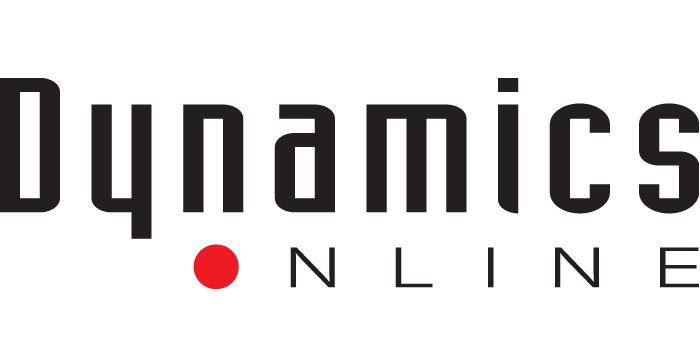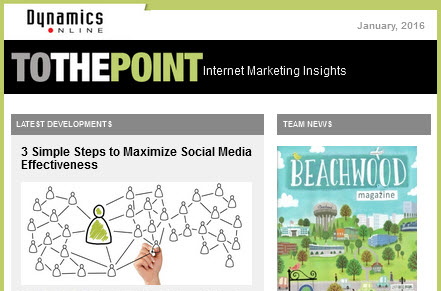Sample Content Marketing Timeline for Small Business – Month Three
This is the third part of our content marketing timeline series for small businesses. If you haven’t read the other two parts yet, here’s month one and here’s month two.
By this point in your content marketing strategy (month three), you’re starting to get the hang of things: Your blog posts are starting to develop a flow and a voice, you’re starting to see more traffic on your site, and your social following is beginning to grow. Things are looking pretty up, eh?
Well I have some good news and some bad news.
The good news: You’ve already done more than most and Google is likely already rewarding you with increased search volume and rankings.
The bad news: The journey is far from over.
There is no such thing as overnight success in content marketing. In fact, a study on HubSpot claimed content marketing campaigns don’t really take off until after the first year’s worth of effort. But don’t get discouraged! Your perseverance will yield its rewards in due time.
With month three, we’ve done much of the up-front planning so you don’t have to, and we allocate no more than 5-6 hours each week to implement your content marketing campaign. In month three we are beginning to create longer pieces of content our audiences will have to download. This serves multiple purposes like collecting email addresses and enhancing our role as industry expert.
Here is what you’ve (ideally) done so far with your content marketing:
- Keyword research
- Blog set-up and customization
- Email subscriber service set-up
- Social media platforms are live and active
- Metrics are established to determine success
- You have written 4-6 blog pillar articles, with other smaller articles in the mix
- You’ve published and begun to connect with your audience online
Time to start month three!
Content Marketing Plan Implementation – Month Three
Week One
Keep Writing (2 hours)
At this point, each week should have about two hours of time dedicated to writing blog posts. This will help create a regular flow and backlog of content, not to mention turn you into a content marketing machine!
Begin Creating Downloadable Content (3 hours)
This is where the fun really begins, and we can’t possibly encapsulate the joys of creating downloadable content (DLC) like eBooks, white papers and other collateral. Let’s just say books have been written about how to write books, and that applies here, too.
Benefits of Creating Downloadable Content:
- Creating larger, downloadable content pieces will help to solidify you as the expert in your industry and give your followers a little more meat to break up the potential monotony of the blog posts.
- Gives you a platform and the opportunity to delve more deeply into different areas within your industry, moreso than a blog post could.
- Provides an avenue to collect customer information like names and email addresses. It’s crucial to gate your content and make the potential customer provide their information. This will allow you to measure the success of this and future campaigns more effectively, now that you have the ability to track individual behavior patterns. (Note: Also allows for personalization of future content!)
Some key ideas to keep in mind when beginning this process include:
- Write. Then Edit. Do not do both at the same time. Hopefully you’ve been doing this with your blog posts, but if not, separating these two processes will help maximize your efforts and make your writing more concise and professional.
- Ensure your content is well-organized and caters to where your prospects are in the buying process. You won’t be writing the same content for those ready to purchase versus those strictly seeking information.
- Place a clear call to action at the end of the content (and potentially throughout). If this DLC was free, ideally you have a low-tier buy-in your readers can make (like a $2.99 eBook or low-cost monthly subscription). If THIS was your low-tier buy-in, then you’re probably further along in the content marketing process and have a mid- to high-tier buy-in, like an online class or a larger print piece.
- Using the keyword research you did in month one, ensure the title of your downloadable content is optimized for organic search. We’re not stuffing your title with keywords, simply ensuring we’re using the exact language your audience is using. Tools like Google AdWords Keyword Planner can help.
Week Two
Continue Creating Downloadable Content (2-3 hours)
Abide by the bullets above and you shouldn’t have a problem continuing in this process.
Drip Campaign Creation (2-3 hours)
A drip campaign is an automated email campaign intended to pull visitors through the sales cycle. This is created in advance of the publication of your downloadable content so that when users download the content they are also placed on a drip campaign that can both supplement what they’re reading and help them progress though the sales funnel.
The length of your drip campaign (i.e. number of emails) depends on a variety of factors, like the length and depth of your downloadable content, what additional content you have to supplement it with, and how much time you have to create it. I normally like to create drip campaigns that are 3-6 emails, with about an hour spent writing each email.
Most of the emails in the drip campaign are NOT a hard sell. They provide helpful information and may drive visitors back to a certain section of your website that’s applicable to the content being discussed, but no sell takes place until the last one or two emails, with the final email really bringing it home.
Keep Writing (2 hours)
Yep. This won’t end.
Week Three
Custom Imagery/Promotional Banners (1-2 hours)
You’ll want some custom images and banners to place on your site and in your emails to promote your downloadable content and brand your work so it’s recognizable. Hopefully some of this has been done already, but there’s still a need for banners with special offers and targeted messaging.
Not a designer and can’t afford to hire one? No problem. There are some free design programs out there like Canva that are free and easy to use. If even that is too time-consuming, you can always outsource design to Fiverr. This is a favorite of mine – just be sure to case the person who’s going to design your imagery and make sure 1.) they speak decent English, and 2.) their past work samples are competent. I’ve personally had some great success on Fiverr and can’t recommend it enough.
Keep Writing (2 hours)
This week’s content should focus on promoting your upcoming downloadable content release. Create a couple blog posts that you’ll use to unveil your DLC.
Finalize Downloadable Content (2-3 hours)
Time to wrap up writing and dig into editing. It’s also helpful to have a couple other people familiar with the industry apply some of their insight and edits at this point.
Finalize Drip Campaign (1-2 hours)
Same as above: finalize writing and begin editing. You’ll also need to begin plugging these emails into an automation service like MailChimp or AWeber.
Week Four
Launch (4-6 hours)
The success of your launch can be largely dependent on how much time you put into it. I know that seems obvious, but this isn’t a simple “Publish and watch the downloads roll in.” Timing and strategy are everything and here are a few key pointers on how to launch properly:
- Launch with a Landing Page – It’s easy for visitors to get distracted, so be sure to direct them to a landing page with only two ways out: download your content or X out of the window. You might think you’d actually lose potential customers because of this, but people appreciate ease of use and clear instructions. So use the landing page to describe what it is you’re offering and to sell it hard. If you have them, testimonials can be hugely helpful at this stage.
- Create a Double Opt-In – You’d be surprised how many bogus email entries you receive when launching a campaign like this. Most email services have this built in, but often you’ll have to select the double opt-in feature, so make sure that box is checked.
- Leverage your Network – Whatever network you’ve built over the past couple months of content marketing (and years of professional work) will need to be notified of your release. Email your network, post to social media and send post cards! (kidding on that last one . . . but it might work?) Whatever you need to do to get the word out, your network will normally be more than happy to retweet and share your content, so long as you’ve treated them well and provided tons of value with your content marketing,
- TEST! TEST! TEST! The worst thing you can do is launch publicly and have the infrastructure not lined up. Visitors tend to be impatient, and if they can’t get what they want on the first try, they’ll give up (especially if it’s free).
- Track Your Efforts – Using tracking tools like Google Analytics or a custom tracking software you have on the site, measure the success of this campaign and learn where you came up short and where you found success. Metrics are crucial to observe in content marketing – they help us learn from our past mistakes and capitalize on our areas of strength. Do not neglect metrics!
. . . Keep Writing (2 hours)
Like I said, this never ends :).


